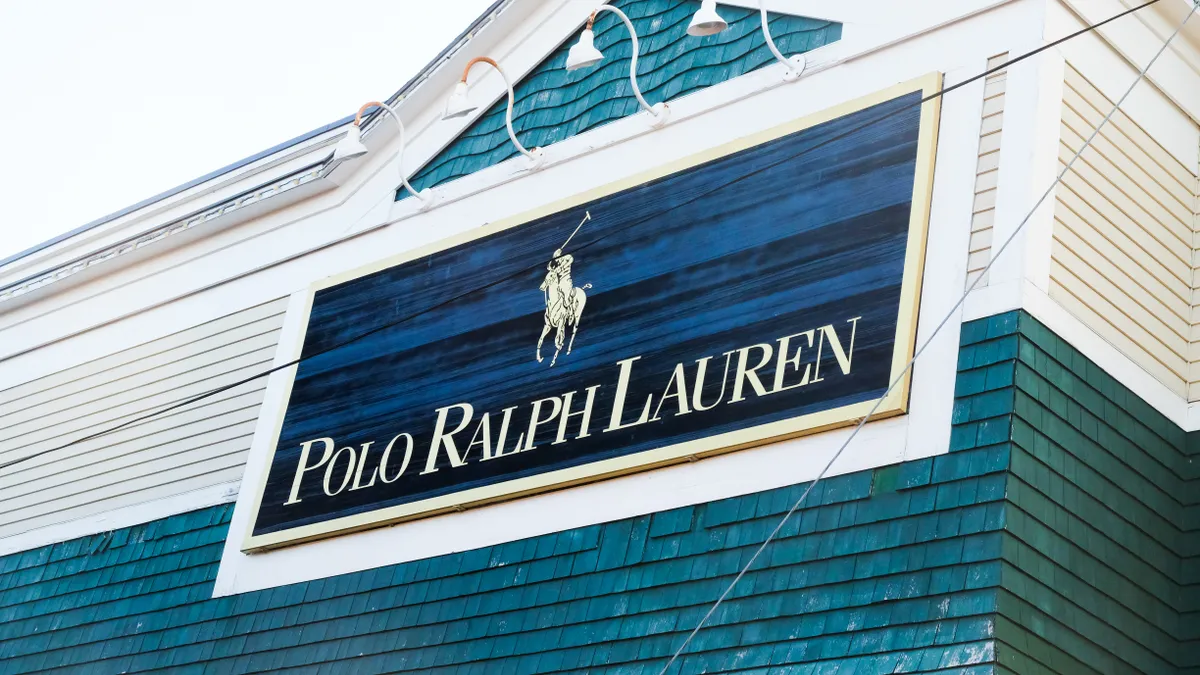Converting bottles to recycled plastic. Redesigning baby lotion bottles to ditch the pump. Swapping out the black Listerine cap for a clear resin one. Reducing the dimensions of cartons holding Carefree pads and o.b. tampons to use less paper.
These are some of the changes Johnson & Johnson will make in an effort to convert its consumer health products packaging to sustainable options.
The goal is for J&J's consumer brands to use 100% recyclable, reusable or compostable plastic packaging, and certified/post-consumer recycled paper and pulp-based packaging by 2025.
The packaging changes are part of a larger Healthy Lives Mission, in which the company will spend $800 million to make these packaging changes, along with changing sourcing for some products. That includes using home-compostable fibers in makeup wipes, and buying oats and flavor oils from environmentally-conscious farmers. The company also plans to source electricity from renewable sources. J&J declined an interview for this story.
The global company’s efforts are in line with industry goals and trends, wanting packaging to be recyclable, compostable or reusable, said Sandeep Kulkarni, president of KoolEarth Solutions, a sustainable packaging consulting company not involved in J&J’s efforts.
#JNJ is proud to introduce the Healthy Lives Mission—an $800 million investment through 2030 to help improve the health of people and the planet. From Neutrogena® to Listerine®, see how eight of our iconic brands are making their products more sustainable: https://t.co/wzcE2rz5Fy pic.twitter.com/GNHcSGowYY
— Johnson & Johnson (@JNJNews) September 17, 2020
The planning and goal-setting process
Any company wanting to overhaul to a more sustainable model would start with a baseline assessment of current packaging. Companies may not know how much of their materials meet the standards they want to set. Companies with a broad product line or global reach may want to start with the highest volume SKUs or largest markets first, Kulkarni said.
Determining a company’s sustainability goals should not be one-size-fits-all, said Wes Carter, president of Atlantic Packaging. The company works with J&J, but Carter did not speak specifically about J&J’s projects.
"When you can find alignment between cost savings and sustainability, those programs work really well and happen much faster."

Wes Carter
President of Atlantic Packaging
With any company, it’s important to analyze where the biggest opportunities are, based on packaging material volume needed or in upgrading technology, he said. "The company’s goals should drive it all," said Carter.
These goals can sometimes conflict within the sustainability realm. The sustainability efforts should be highly coordinated with the company’s procurement department or reside inside it. Sometimes sustainable packaging options cost more. If sustainability efforts are outside the procurement department, it can conflict if procurement’s focus is low prices.
"We are trying to find sustainable solutions that are also a cost advantage for the organizations. When you can find alignment between cost savings and sustainability, those programs work really well and happen much faster," Carter said.
Rethinking package design, head-to-toe
To make a package fully recyclable, every part must be recyclable, including the label, Kulkarni said. Some bottles use a full bottle label, which can cause recycling issues. The packaging should also be compatible with the recycling process, likely a reason J&J is looking to remove the pump from some products. The pump needs to be discarded before recycling the bottles, and not all consumers do this.
The company has to change more than just the design when removing something like a pump. They have to address the consumer experience. That includes understanding the consumer use case and journey, and having empathy for how they use the package in their own environment, said Josh Oleson, vice president of product development and innovation at HAVI, a company managing large brand supply chains, including packaging, sourcing and logistics. Brands should have conversations with consumers about why they’re changing and how it fits into their broader brand goals.
But sustainability isn't the only consideration in packaging. The packaging has to be functional. There’s a greater issue if the packaging causes product damage in an effort to use more sustainable packaging materials. “You don’t want to create a waste stream of product,” Carter said.
J&J's sustainability scores improve over the years
| 2017 | 2018 | 2019 | |
|---|---|---|---|
| Climate change | A- | A | A |
| Palm oil | N/A | C | A- |
| Timber | N/A | C | A- |
| Water security | B | A- | A |
Source: CDP
Instantly reducing supply chain waste starts with using less material. Package optimization testing can help determine the least amount of material needed to effectively ship products. "There’s no substitute for using less," Carter said.
Taking the long view is important when considering materials, said Oleson. One consideration is keeping the value of the raw material as long as possible in the circular economy. That can include rethinking not just materials but design. The use of straws in food service is one example. To remove the straw, some brands are rethinking designs to include a straw-less lid, said Oleson.
Closing the loop in B2B
Recycling materials can be easier when the sustainability program is designed for B2B rather than B2C.
If a product ships from the manufacturer to a limited number of distribution centers, it’s easier to recover packaging to create a closed loop system, said Carter. Meanwhile, products going to consumers go to hundreds of millions of destinations, and the infrastructure for recycling at the consumer level is poor, Carter said, "a lot worse than most people realize."
Curbside recycling is most successful for paper. "If you can find paper replacements for plastic, that’s something to evaluate," Carter said.

J&J is working to shift to using non-plastic materials, like cardboard, whenever possible. One hitch is Nicorette gum, as the packaging has barrier requirements as a medication, including anti-moisture protection.
J&J is adding compostable goals in its packaging, but there’s a difference between home composting and industrial composting. The makeup wipes will be home-compostable, but J&J did not mention in the announcement whether or where the plastic packaging could be composted.
"Most companies putting things out there as compostable are industrially compostable," said Kulkarni. "You have to go to an industrial facility. You can’t put them into your back yard composting system. You have to be careful about how you message compostability."
Making a circular supply chain with plastic
"We have to be really careful in making blanket statements about things like 'we want to get rid of all plastic packaging,'" Carter said. Certain types of plastic are efficient and can be recovered and recycled. "Be careful not to replace a highly efficient plastic with an inefficient substitute."
An example is stretch film, which his company sells. It’s usually made from virgin plastic, and uses 6-10 ounces to wrap a pallet. "Trying to target replacing stretch film to get rid of plastic packing is not efficient. You would have to use double wall corrugated boxes instead," Carter said.
"To get more recycled plastics, you have to make sure you’re helping consumers recycle more and better."

Sandeep Kulkarni
President of KoolEarth Solutions
Looking at the carbon footprint should be part of the sustainability process. Usually, the less material used, the lower the carbon footprint, Carter said.
"When you’re using plastic packaging, it can be so efficient that the carbon footprint is really low. Going from plastic to paper, you may be increasing your carbon footprint," Carter said.
If plastic is found to be highly efficient, the next step is determining how to recover that plastic packaging and recycle it to create a closed loop system.

Plastic color can also change to generate higher recovery values. J&J is planning to change Listerine’s black cap for a clear resin one, and it already changed its black OGX shampoo bottles to clear. Clear plastic can be reprocessed into more forms than black plastic.
"Rethinking those choices of raw material with end of life in mind" can make a difference, said Oleson.
Switch the packaging, switch manufacturing and sourcing
Packaging changes can impact the manufacturing and filling process, depending on the scope of changes.
J&J likely gets its bottles from off-site manufacturers, so that is "not a huge change in the manufacturing process or filling lines," Kulkarni said.
Switching from a black clap to a clear one doesn't change how the bottle is made or alter the manufacturing equipment used for filling. But a company may need to adjust the factory’s filling sensors to accommodate for the color change.
"Be careful not to replace a highly efficient plastic with an inefficient substitute."

Wes Carter
President of Atlantic Packaging
Overhauling packaging also requires the ability to source the necessary materials, but the supply of recycled plastics is limited. "There’s a push toward increased recycling rates, but to get more recycled plastics, you have to make sure you’re helping consumers recycle more and better," Kulkarni said.
Demand for recycled post-consumer resin pellets to mix with virgin plastic is "off the charts," said Carter. "Every company in America wants post-consumer resin in their products, but we don’t have great infrastructure."
Volume is ramping up because of demand, but it’s not available in massive volumes yet, he said. "I believe we’ll get there."
Correction: A previous version of this article stated Atlantic Packaging works with J&J on its Healthy Lives Mission. The company works with J&J but not that mission.
This story was first published in our weekly newsletter, Supply Chain Dive: Operations. Sign up here.













